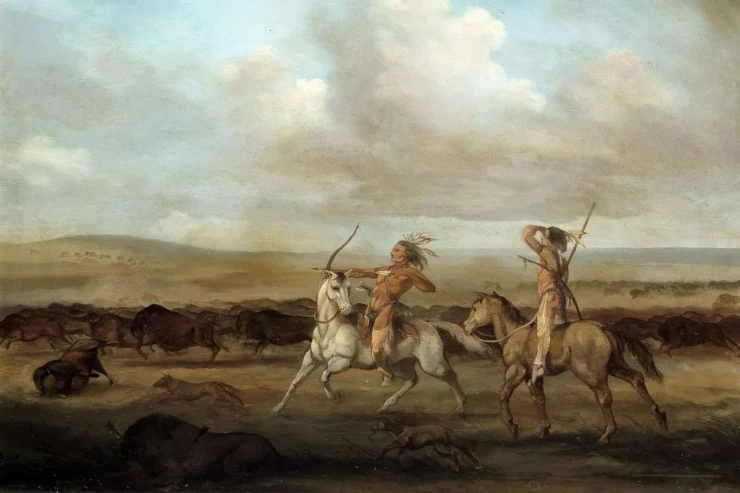


The quest for vision alone is the most common method for many tribes to connect with spirits and gain their power. They can seek it several times throughout life and even at old age, although it is traditionally given among young people. The upper skagit of the western sector of the state of Washington believe that spirits communicate at any age, although by tradition, parents send their children in search of visions from the age of four until puberty. Almost all Indian nations consider it crucial for girls and boys to experience vision and develop spiritual powers.
The individual must purify himself internally and externally through solitary fasting and bathing in the sweat shelter to receive the spirits. The power of the spirit in question is directly related to the duration of fasting.
A culminating stage in the search for visions was the ritual purification that was carried out in the sweat shelter. The individual settled in the shelter and generated heat by sprinkling water on the stones that had been heated; it was impregnated with steam and the sweat was washed by the use of mice. Sweat shelters continue to be used not only for spiritual purposes, but also for the purpose of relaxing and recovering.
Children are instructed about the spirit they must seek. For example, you can tell a child that I have a bow to help him find the vision of a hunter spirit. If the child ends up successful, he should refrain from publicly recognizing it until he reaches a certain age. It is crucial that young people receive only the help of the power they have recently acquired in extreme situations.
Adult foxes actively sought the ability to have visions. They were subjected to physical deprivation and even torture so that they could see. If they succeeded, they hoped to acquire special wealth or powers on the battlefield. Failure was not a social stigma because most of those who tried had never had a vision.
The washos of the Great Basin considered that sacred power came without seeking it or desiring it. The first signs appeared in a series of dreams in which an animal or a spectrum used to appear. This vision gave them powers that would last a lifetime. This power was feared by the washos because it was dangerous and, the more defined it was, the greater risk it entailed. The individual could reject the offering, but in this case, the spiritual being or wegaleyo used to punish the dreamer with difficulties. The wegaleyo gave him instructions through dreams when the individual finally gave in. In particular, he conveyed his unique sacred song or song, the objects he was to use in ceremonies, and the location of the secret pond for ritual ablutions and other sacred practices. The spiritual being required the individual to seek a known sacred person to teach him the arts of hand games, ventriloquia, and other skills necessary for ceremonies.
The upper skagit in the state of Washington believed that shamans were only known when they began to exercise their powers in public. After acquiring the necessary spirits through fasting or visions, each individual decided whether or not to become a shaman. Many sacred beings of this people hoped to mature for spiritual powers, as they could inherit the shamanic spirit of a deceased parent or brother.
 Native American Cultures: Myths and magic
Native American Cultures: Myths and magic
You can purchase this book on Amazon.
This book challenges deep-seated stereotypes and offers an enriching perspective that contributes to a more comprehensive and respectful appreciation of the indigenous peoples of North America. Through an understanding of their myths and beliefs, we are taking an important step toward cultural reconciliation and the recognition of the diversity that has enriched the history of this continent.
These mythical stories, many of them linked to the literary genre of fantasy, reveal a world where the divine and the human intertwine in narratives that explain the cosmic order, creation, and the fundamental structure of the universe. Discover how these sacred tales bear witness to the deep connection of the natives with nature and spirituality.
Native Americans: Population and Territories
Native Americans: Cultures, customs, worldview
Traditions, myths, stories and legends